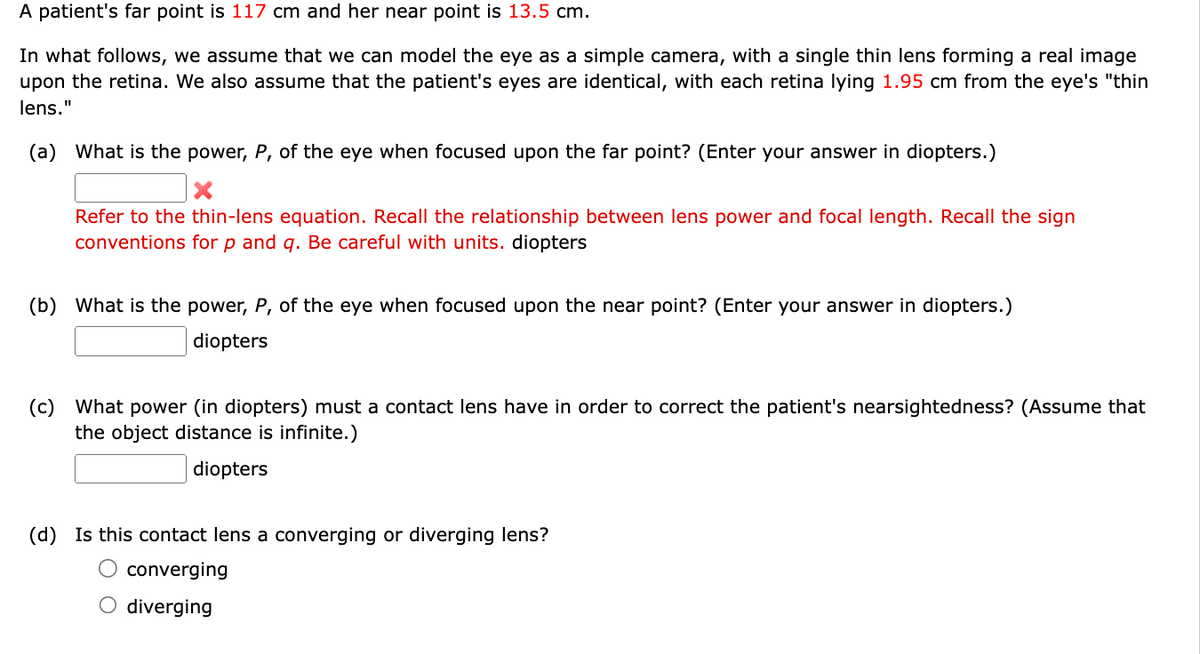A patient's far point is 117 cm and her near point is 13.5 cm. In what follows, we assume that we can model the eye as a simple camera, with a single thin lens forming a real image upon the retina. We also assume that the patient's eyes are identical, with each retina lying 1.95 cm from the eye's "thin lens." (a) What is the power, P, of the eye when focused upon the far point? (Enter your answer in diopters.) X Refer to the thin-lens equation. Recall the relationship between lens power and focal length. Recall the sign conventions for p and q. Be careful with units. diopters (b) What is the power, P, of the eye when focused upon the near point? (Enter your answer in diopters.) diopters (c) What power (in diopters) must a contact lens have in order to correct the patient's nearsightedness? (Assume that the object distance is infinite.) diopters (d) Is this contact lens a converging or diverging lens? converging O diverging
Ray Optics
Optics is the study of light in the field of physics. It refers to the study and properties of light. Optical phenomena can be classified into three categories: ray optics, wave optics, and quantum optics. Geometrical optics, also known as ray optics, is an optics model that explains light propagation using rays. In an optical device, a ray is a direction along which light energy is transmitted from one point to another. Geometric optics assumes that waves (rays) move in straight lines before they reach a surface. When a ray collides with a surface, it can bounce back (reflect) or bend (refract), but it continues in a straight line. The laws of reflection and refraction are the fundamental laws of geometrical optics. Light is an electromagnetic wave with a wavelength that falls within the visible spectrum.
Converging Lens
Converging lens, also known as a convex lens, is thinner at the upper and lower edges and thicker at the center. The edges are curved outwards. This lens can converge a beam of parallel rays of light that is coming from outside and focus it on a point on the other side of the lens.
Plano-Convex Lens
To understand the topic well we will first break down the name of the topic, ‘Plano Convex lens’ into three separate words and look at them individually.
Lateral Magnification
In very simple terms, the same object can be viewed in enlarged versions of itself, which we call magnification. To rephrase, magnification is the ability to enlarge the image of an object without physically altering its dimensions and structure. This process is mainly done to get an even more detailed view of the object by scaling up the image. A lot of daily life examples for this can be the use of magnifying glasses, projectors, and microscopes in laboratories. This plays a vital role in the fields of research and development and to some extent even our daily lives; our daily activity of magnifying images and texts on our mobile screen for a better look is nothing other than magnification.
I need help please.

Trending now
This is a popular solution!
Step by step
Solved in 8 steps









